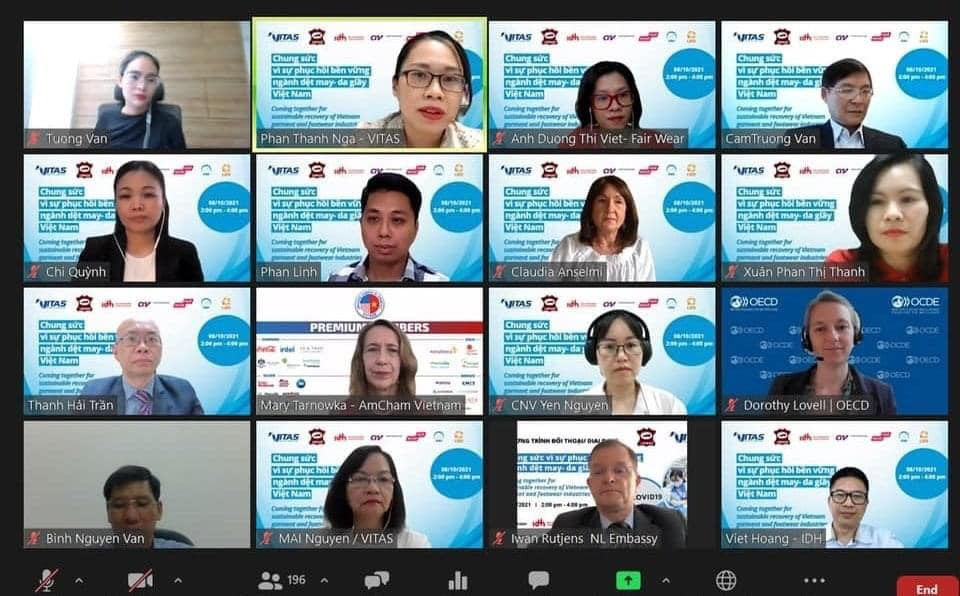Joining hands for the sustainable recovery of the garment industry
In September 2021 alone, Vietnam’s total textile and garment export turnover was estimated at 3.06 billion USD, decreased more than 8% compared to the previous month and compared to the same period last year.
Employees working in the industry were severely affected in terms of psychology, health, and economy, and were almost exhausted during the prolonged distance. Over 60% of migrant workers want to return to their hometown or have already returned to their hometown.
It is forecasted that in the last 3 months of 2021, the entire textile and garment industry will face the risk of serious labor shortage.
Those are some of the highlights raised at the dialogue “Joining hands for the sustainable recovery of Vietnam’s textile, apparel and footwear industry” organized by the Vietnamese Textile and Apparel Association (VITAS) and the Vietnam Leather, Footwear and Handbag Association (LEFASO) in collaboration with the Public – Private Partnership (PPP) group held on the afternoon of October 8, 2021. Participating in the dialogue were representatives of the Government (Ministry of Labour, Invalids and Social Affairs), representatives of enterprises (VITAS, LEFASO), representatives of Trade Unions (Institute of Trade Unions), representatives of brands (American Business in Vietnam AmCham, European Business Association in Vietnam EuroCham).

Many solutions were proposed by the participants, in which respecting employees, adjusting policies and bringing policies closer to employees, and ensuring better working conditions were considered key solutions.
According to research conducted by VITAS, LEFASO and the Public-Private Partnership (PPP) group and shared at the Dialogue, the opportunity to mobilize workers to return to work is still there because of coverage of at least 1 dose of vaccine of workers in the industry is quite high (about 73.6%), the percentage of migrant workers who want to return to work at the current factory is high (about 89%). Large enterprises should maintain allowances for workers during work stoppage to build trust and strengthen employee engagement. In addition, the burden sharing of testing costs, shipping fees and the commitment to continue to have orders after the transaction… of the brands also contributed to the rapid recovery of the textile and garment business.
According to Vice President and General Secretary of LEFASO, Ms. Phan Thi Thanh Xuan, pandemic prevention and control go hand in hand with economic recovery and development under “new normal” conditions, which requires close coordination between businesses and local authorities in implementing flexible epidemic prevention and control plans in parallel with safe production plans, combined with support measures so that employees can return to work.
From the perspective of labor management, Director of the Legal Department – Ministry of Labour, Invalids and Social Affairs, Mr. Nguyen Van Binh said that in addition to promulgating support policies from unemployment insurance fund for businesses and employees, Resolution 68, Decision 23 are continuously being revised in a simpler direction in order to facilitate the access to favorable and timely support policies.
On behalf of the collective of employees, the Institute of Workers and Trade Union suggested that the parties should pay more attention to employees, meet the needs of financial support and take care of and enhance the health of workers.
The Dialogue Program “Joining hands for the sustainable recovery of Vietnam’s textile and footwear industry” received support from organizations such as Fairwear, Dutch Trade Union CNV International, Center for Development and Integration (CDI); IDH Sustainable Trade Initiative and International CARE Organization in Vietnam.
CDI Vietnam.
Share: